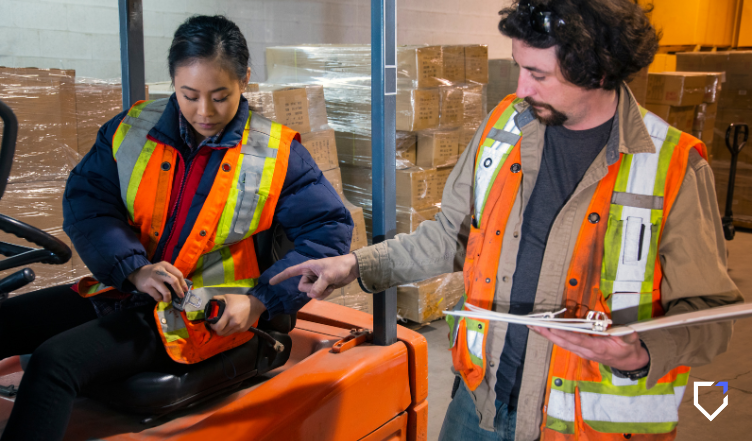Workplace safety programs help protect employees from accidents and injuries, which can result in costly workers’ compensation claims and lost productivity. However, many misconceptions surrounding these programs prevent companies from implementing them effectively.
Here are a few false impressions operations teams and workers often have about workplace safety programs and why they’re not the whole picture.
Misconception #1: It’s too expensive.
A common misunderstanding is that implementing a workplace safety program is expensive. Employers often see budgetary constraints as an obstacle, and operators may be unaware of the costly consequences of workplace injuries or uninformed about the return on investment that a workplace safety program can provide.
These programs, however, are an investment in a company’s long-term success. Reducing the likelihood of accidents and injuries saves employers money on workers’ compensation claims, medical expenses, non-compliance fines and lost productivity. In fact, studies have shown that for every $1 invested in workplace safety programs, companies can save up to $6 in costs related to workplace injuries.
Misconception #2: It will take up too much time.
High-performing teams focused on ‘getting the job done’ may believe that implementing something new, such as a workplace safety program or safety technology, will take too much time. They think they simply can’t afford to divert resources from other tasks.
However, workplace safety programs don’t have to slow teams down. With the right tools and resources, companies can implement effective safety programs that don’t require significant time. Furthermore, safety programs have proven to increase productivity by reducing absenteeism, raising morale, improving operational efficiency and reducing turnover.
Misconception #3: Nothing bad will happen.
Employers often resist implementing a new safety program because they believe nothing bad will happen. They may not recognize risky behaviors as unsafe, feel confident because accidents and injuries have not occurred previously or think ‘things have always been done this way.’
This reactive approach to workplace safety can be costly in the long term. Safety programs can identify potential hazards in the workplace and implement measures to prevent accidents and injuries before they occur. By being proactive about risk prevention, companies protect their workforce, create a culture of safety, improve productivity and enhance the bottom line.
Misconception #4: Our company isn’t big enough.
Companies may believe workplace safety programs are only for large companies with extensive resources. This misconception can lead to serious consequences. Workplace accidents and injuries can be just as costly and disruptive for mid- and small-sized businesses as they are for larger ones, and in some cases, may even be more so.
Tailored programs can meet the specific needs and resources of any size company. Small and mid-sized operations may benefit even more from a customized approach to safety, as they might implement changes more quickly and efficiently than larger organizations. And they’ll reap all the same benefits!
Overcoming Misconceptions
Overcoming these misbeliefs is critical to the success of workplace safety programs. Companies must recognize their benefits and understand they’re not only necessary for legal compliance, but also for improving productivity, reducing costs and creating a positive company culture that values the health and well-being of its employees.
As trusted advisors, insurance professionals can play a crucial role in educating companies on the benefits of workplace safety programs and dispelling these misconceptions. By working with clients to identify potential hazards and implement effective programs, brokers and agents can help companies create safer, healthier and more successful organizations.
The Kinetic wearable safety platform is proven to reduce workplace injuries by 50-60% and lost work days by 72%. Provided to policyholders at no extra cost, the Kinetic Reflex detects high-risk behaviors and provides data-driven insights to help protect workers and enhance the bottom line.
Learn more about smarter insurance coverage that keeps workers safe and reduces costs today!
